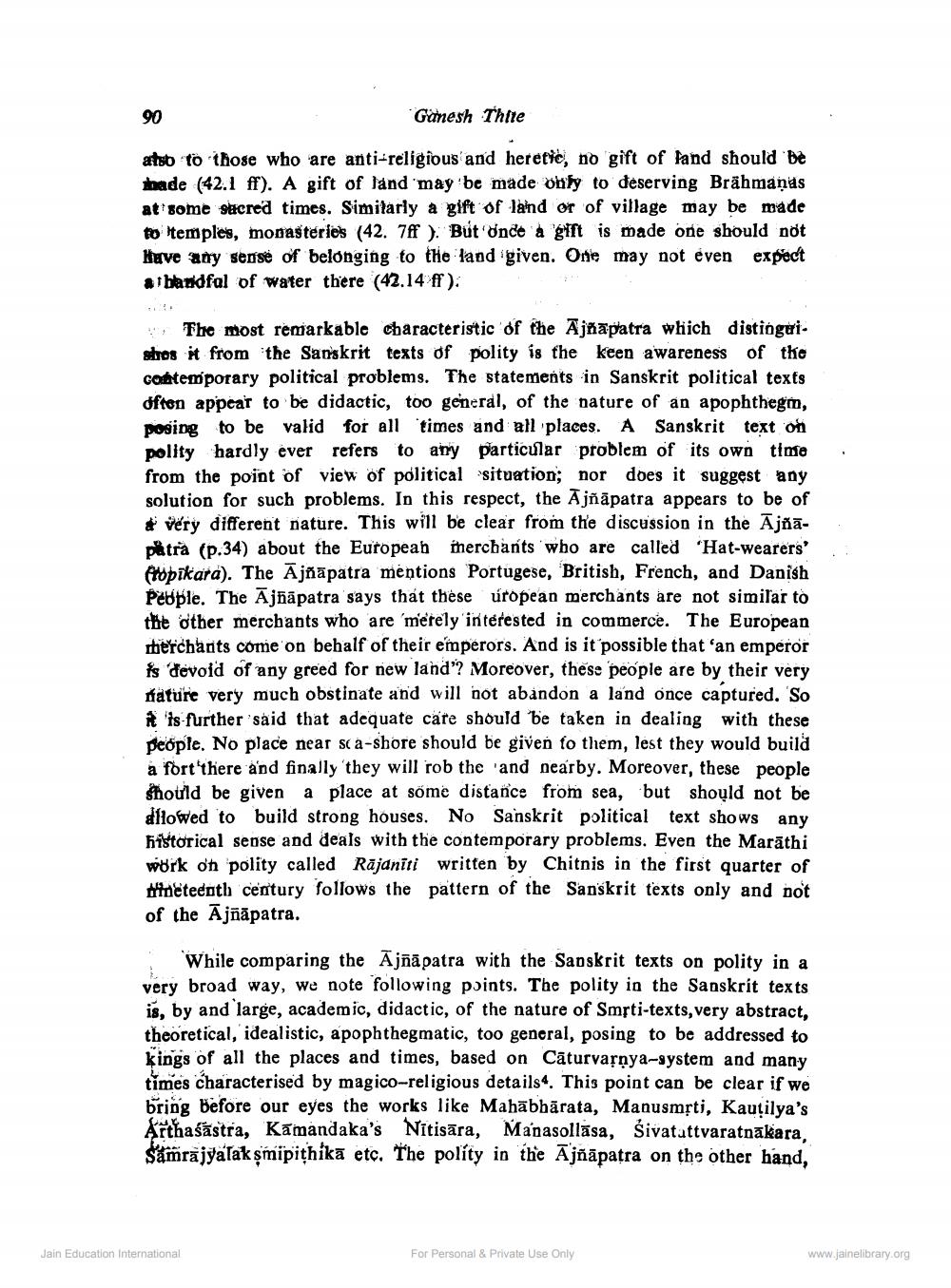________________
90
Ganesh Thite
atso to those who are anti-religious and heretio, no gift of fand should be thade (42.1 ff). A gift of land may be made only to deserving Brähmaņas att some sacred times. Similarly a gift of land or of village may be made to temples, monasteries (42. 7ff ). But once a gift is made one should not Have any sense of belonging to the land given. One may not even expect at blandfal of water there (42.14 ff).
The most remarkable characteristic of the Ajnapatra which distingui. stros it from the Sanskrit texts of polity is the keen awareness of the coétemporary political problems. The statements in Sanskrit political texts often appear to be didactic, too general, of the nature of an apophthegm, posing to be valid for all times and all places. A Sanskrit text on polity hardly ever refers to any particular problem of its own time from the point of view of political situation, nor does it suggest any solution for such problems. In this respect, the Ajñāpatra appears to be of
very different nature. This will be clear from the discussion in the Ajñāpatra (p.34) about the European inerchants who are called 'Hat-wearers' ftopikara). The Ājñāpatra mentions Portugese, British, French, and Danish People. The Ājñāpatra says that these úropean merchants are not similar to the other merchants who are 'merely interested in commerce. The European merchants come on behalf of their emperors. And is it possible that 'an emperor is devoid of any greed for new land'? Moreover, these people are by their very frature very much obstinate and will not abandon a land once captured. So R 'is further said that adequate care should be taken in dealing with these people. No place near sea-shore should be given to them, lest they would build a fort'there and finally they will rob the 'and nearby. Moreover, these people should be given a place at some distance from sea, but should not be dllowed to build strong houses. No Sanskrit political text shows any historical sense and deals with the contemporary problems. Even the Marāthi work on polity called Rājaniti written by Chitnis in the first quarter of Hineteenth century follows the pattern of the Sanskrit texts only and not of the Ājñāpatra.
While comparing the Ajñāpatra with the Sanskrit texts on polity in a very broad way, we note following points. The polity in the Sanskrit texts is, by and large, academic, didactic, of the nature of Smrti-texts, very abstract, theoretical, idealistic, apophthegmatic, too general, posing to be addressed to kings of all the places and times, based on Cāturvarnya-system and many times Characterised by magico-religious details4. This point can be clear if we bring before our eyes the works like Mahābhārata, Manusmộti, Kautilya's Arthaśāstra, Kamandaka's Nītisāra, Manasollāsa, Sivatattvaratnākara, Samrajyalak smipithikā etc. The políty in the Ajñāpatra on the other hand,
Jain Education International
For Personal & Private Use Only
www.jainelibrary.org




